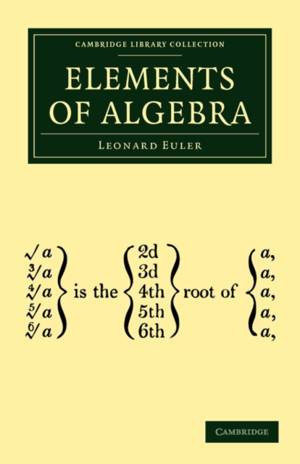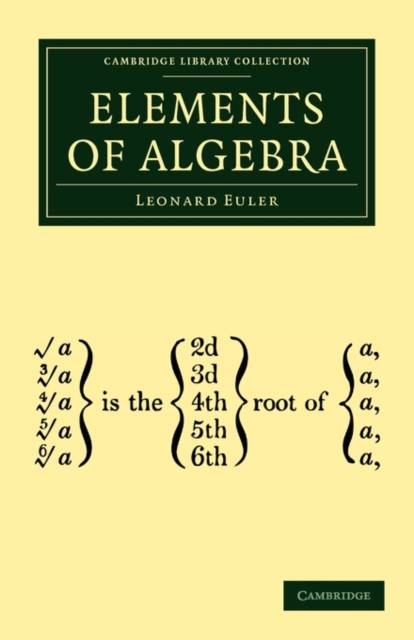
- Afhalen na 1 uur in een winkel met voorraad
- Gratis thuislevering in België vanaf € 30
- Ruim aanbod met 7 miljoen producten
- Afhalen na 1 uur in een winkel met voorraad
- Gratis thuislevering in België vanaf € 30
- Ruim aanbod met 7 miljoen producten
Zoeken
€ 69,95
+ 139 punten
Omschrijving
In 1770, one of the founders of pure mathematics, Swiss mathematician Leonard Euler (1707-1783), published Elements of Algebra, a mathematics textbook for students. This edition of Euler's classic, published in 1822, is an English translation which includes notes added by Euler's tutor, Johann Bernoulli, and additions by Joseph-Louis Lagrange, both giants in eighteenth-century mathematics, as well as a short biography of Euler. Part 1 begins with elementary mathematics of determinate quantities and includes four sections on simple calculations (adding, subtracting, division, multiplication), and then progresses to compound calculations (fractions), ratios and proportions and algebraic equations. Part 2 consists of 15 chapters on analyses of indeterminate quantities. Here, Euler shows the reader several ways to solve polynomial equations up to the fourth degree. This landmark book showed students the beauty of mathematics, and more significantly, how to do it.
Specificaties
Betrokkenen
- Auteur(s):
- Uitgeverij:
Inhoud
- Aantal bladzijden:
- 628
- Taal:
- Engels
- Reeks:
Eigenschappen
- Productcode (EAN):
- 9781108002967
- Verschijningsdatum:
- 20/07/2009
- Uitvoering:
- Paperback
- Formaat:
- Trade paperback (VS)
- Afmetingen:
- 140 mm x 216 mm
- Gewicht:
- 784 g

Alleen bij Standaard Boekhandel
+ 139 punten op je klantenkaart van Standaard Boekhandel
Beoordelingen
We publiceren alleen reviews die voldoen aan de voorwaarden voor reviews. Bekijk onze voorwaarden voor reviews.











